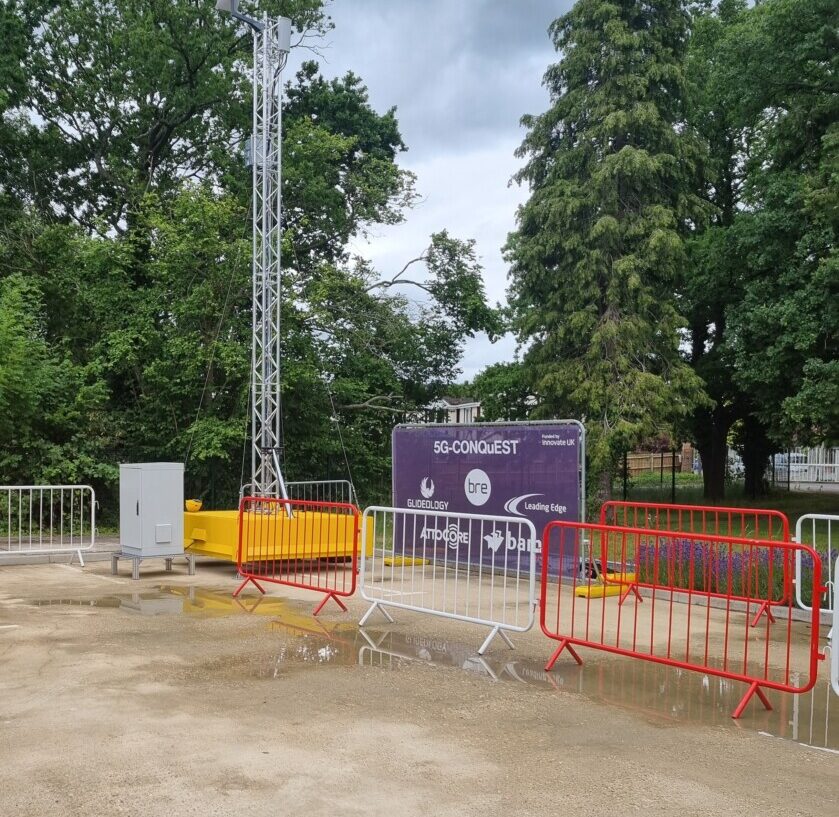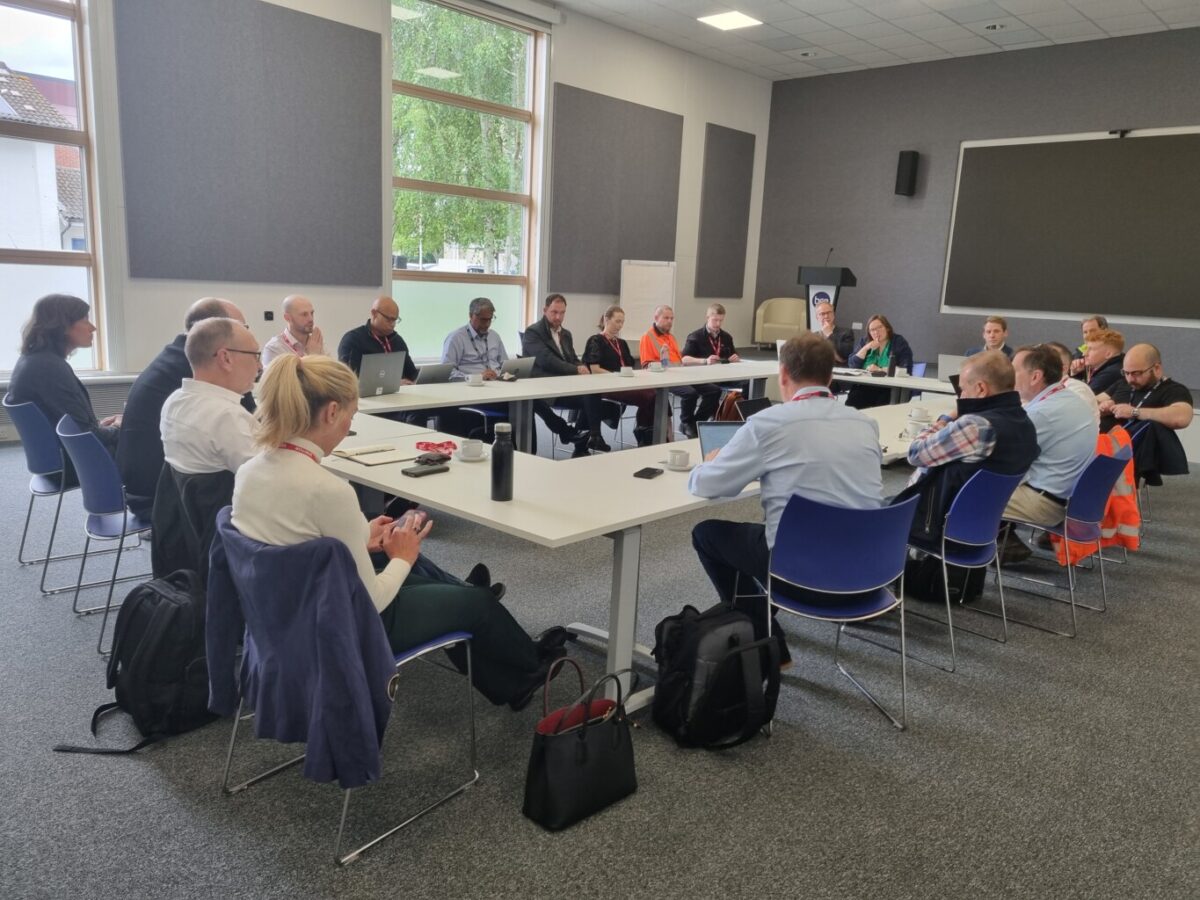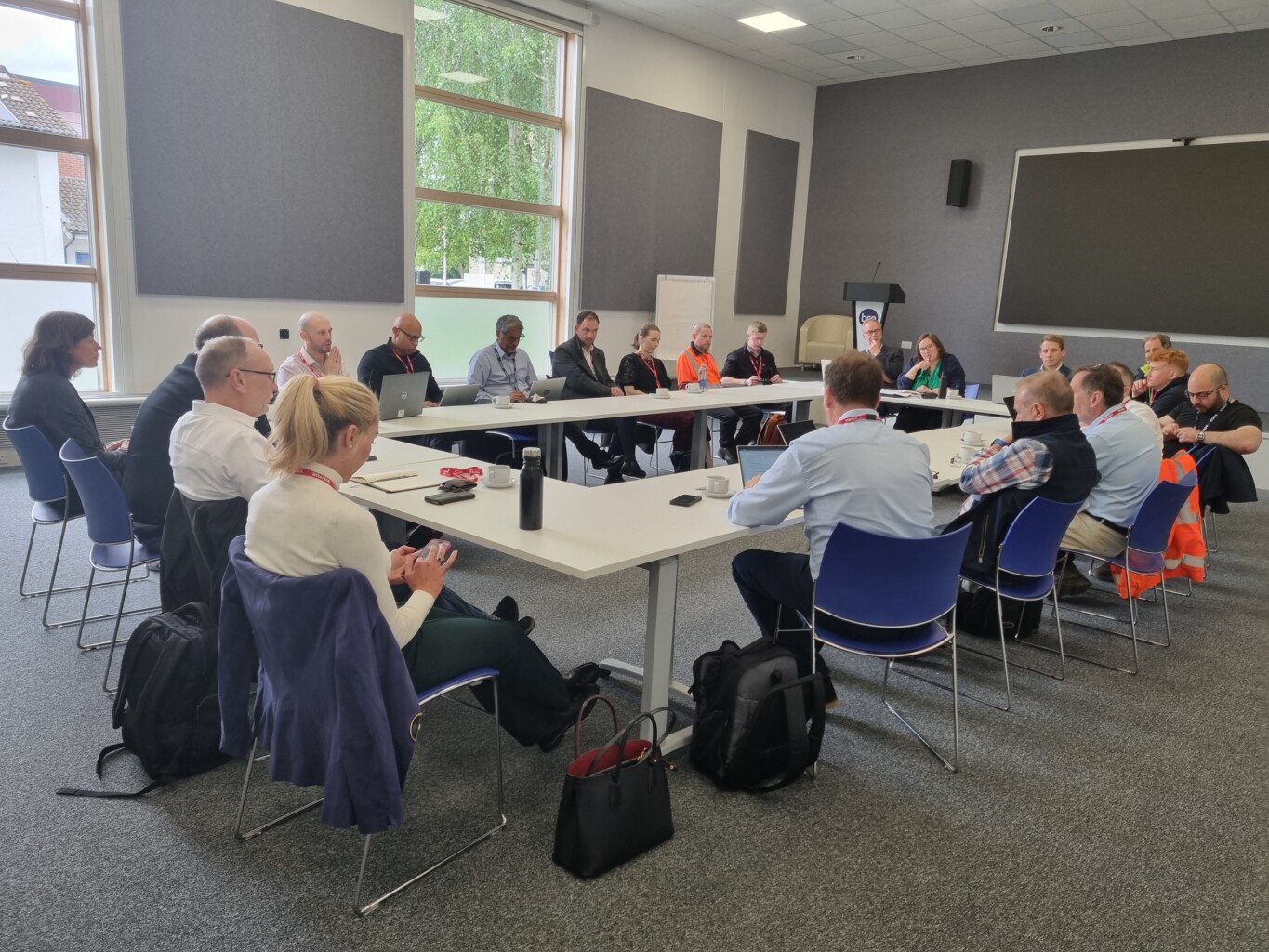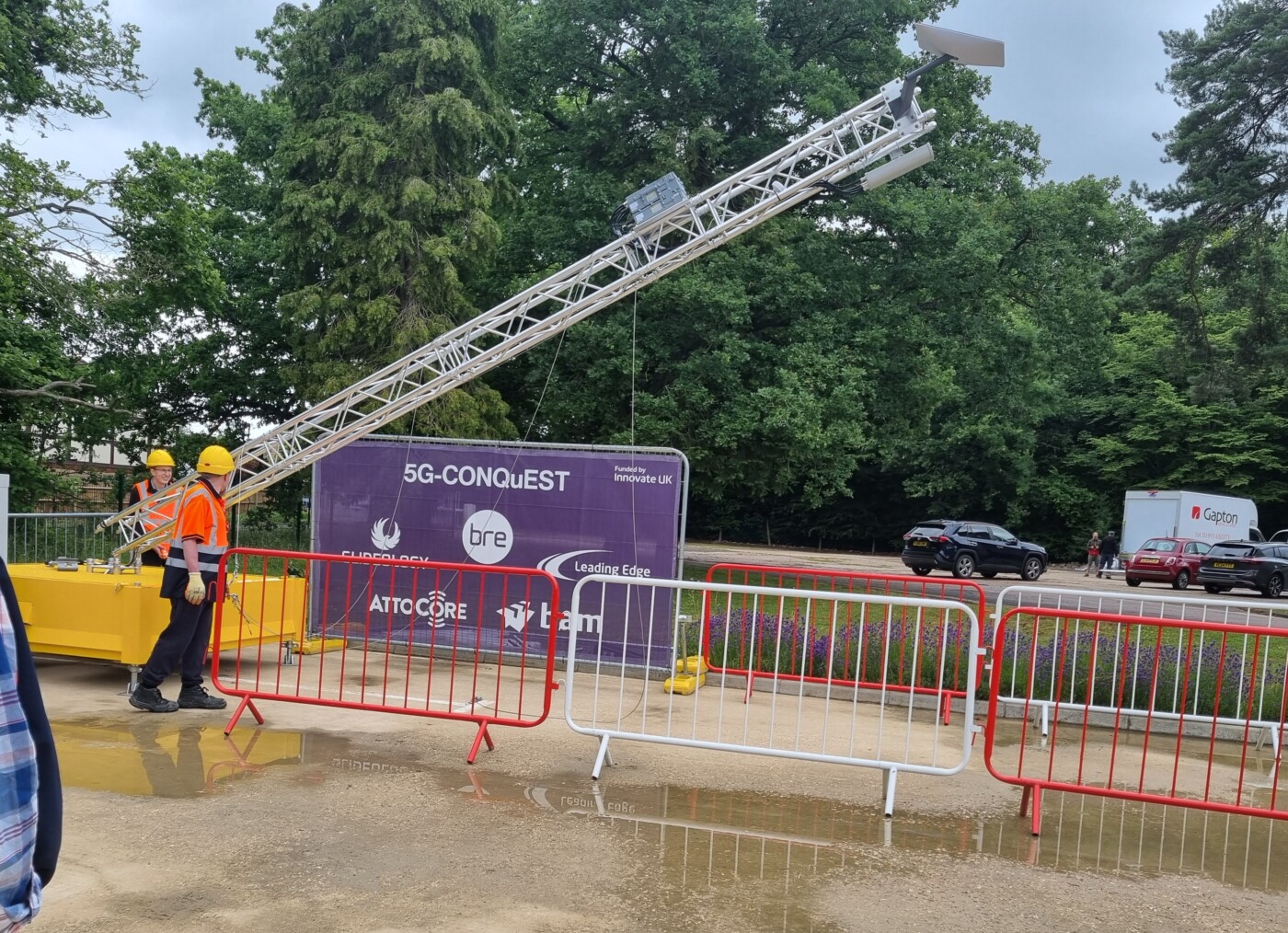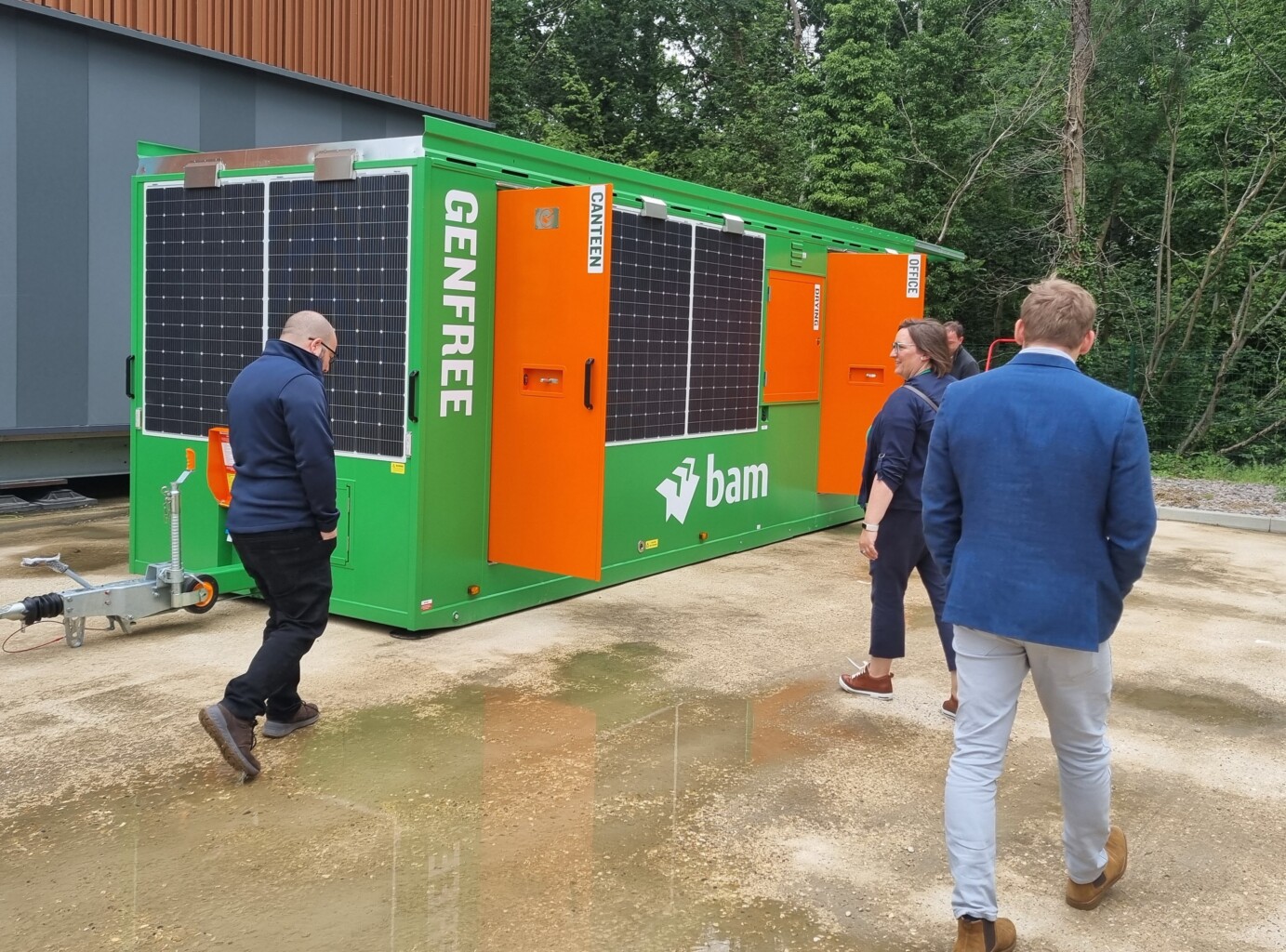5G CONQuEST Workshop
On Wednesday 10th July, Constructing Excellence facilitated a roundtable discussion around the Innovate UK funded 5G CONQuEST Project. Participants were invited to the BRE site to witness the technology and explore some of the opportunities and potential challenges around deployment including licensing, procurement and making the business case.
About The Project
The 5G CONQuEST Project is an Innovate UK funded project that aims to provide low Carbon, flexible, secure, high speed, private 5G coverage for construction sites. The project is being undertaken by Glideology, BAM, BRE, Leading Edge Power and Attocore. They have developed a 5G mast which is easy and safe to deploy, with no working at height required, and can be re-located and moved around the site, though it’s location is linked to the 5G licence. The mast can be powered locally and off-grid.
The Challenge
Public networks are not always reliable and can limit connectivity when on site due to limited capacity. Having a private network ensures the infrastructure deployed is not in use by the public and this can lead to the technology becoming overrun and unusable.
Due to new technology, online applications and innovative products and solutions, the demand for connectivity on site has grown and is now required beyond just the site office. Without the necessary access, projects are hampered in their use of new, more effective methods of tracking monitoring and communicating. For example, remote technology currently being explored such as remote diggers or cranes, these cannot be deployed without sufficient connectivity onsite.
This is particularly true of Health and Safety which often requires connectivity to deploy new systems and programmes to monitor. The benefit to this is that it can be a driver in seeking better connectivity solutions to enable more effective Health and Safety.
![]()
The Solution
The solution is a private network that can be deployed onsite and relocated as needed, whether to a new location on the same site or to a new site altogether. The project team and developed the 5G solution to explore how this can be achieved and the benefits of better connectivity on construction sites, with potential to improve the uptake of technological innovations across the industry.
Product Demonstration
During 5G CONQuEST roundtable discussion, participants were given the opportunity to witness a demonstration of several innovative solutions that could be used and linked to the 5G product to benefit construction sites.
5G Mast
The 5G mast demonstration enabled participants to see it being lowered and raised for portability. It requires very little maintenance so once deployed, should not require much intervention unless in the event of re-locating and was quick and simple to manoeuvre.
This product delivers many benefits on site by delivering 5G access for example, phones/tables can be used effectively, remote products can be deployed, onsite cameras, etc. can be powered which supports site security and other innovative products can be connected, e.g. Boss Cabins welfare unit.
Leading Edge Solar Panels
This can be used in place of a generator to power and store energy for use on site. The panels are movable and can change configuration to ensure they are in a good position for the sun. The system seen onsite at the roundtable was one of the larger portable solar panel systems on the market and can be used to power the 5G mast, supporting the delivery of 5G connectivity on construction sites.
Boss Cabins
Whilst the unit demonstrated during the roundtable visit is not part of the 5G project, it presents an opportunity to see how the 5G mast could be used to support connectivity on site and enable better use of innovative products such as the remotely monitored cabins.
The Boss Cabins are powered via solar panels and provide a more comfortable environment for site workers including toilet facilities, welfare unit, office, drying room. These facilities can be monitored remotely, tracking the needs of the cabin or any system errors which may occur, preventing the need for someone to be on site.
Potential Issues to Explore
- Licensing: A licence is required for deployment and can be applied for via Ofcom Private 5g. For this project the licence took 12 weeks during the the initial application, though Ofcom are developing an ‘instant’ licence application process. The base station grid reference must be stated on the licence application which restricts movements after this has been defined. The team will be exploring how this issue could be solved, potentially applying for several licenses for several locations to enable movement once on site.
- Business case: Making the business case and getting adoption is always a challenge in the construction sector. Solutions such as this would initially be procured on a project-by-project basis. Getting the right point in the procurement cycle. Participants indicated that a scalable solution that could grow and flex throughout the project with a low-cost entry point that can be used to prove the value of the solution.
- Proof of concept: To remove some of the risk involved in adopting innovations such as this, there needs to be proof of concept. Case studies and in-practice examples are key to showing the industry how these solutions can be deployed effectively and the benefits they can provide.
- Capacity: As the Internet of Things becomes more common, as well as remote access devices and products, will the 5G solution be able to hold up to the demand.
What Next for the Project?
The 5G mast and solar panels will remain on the BRE site until September 2024 and the project team will be working to iron out any issues in the technology.
The team will also be exploring potential improvements or tweaks to the projects to improve the technology and deliver the most effective solution. For example:
- The back end of the technology. There’s an IT piece that needs to be looked at to balance out the speed of the 5g and the backwall. Whilst the 5G may provide good connectivity, it becomes unusable if hampered by back end.
- Potential pilots. The team will be looking at potential pilots for the products to test on live sites.

“We’ve got the connectivity, but we haven’t got the devices to connect yet”
Gavin Allen, Glideology
